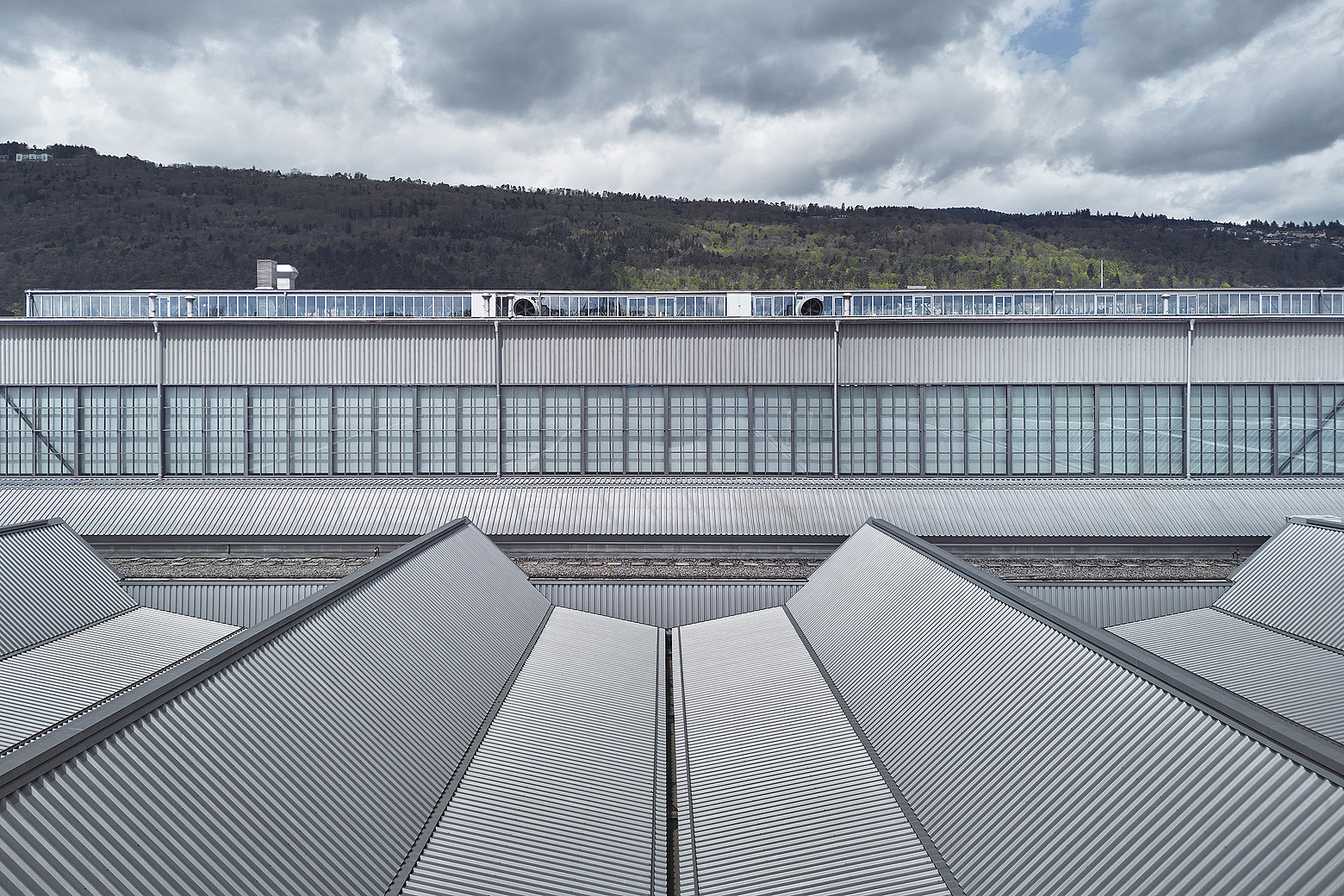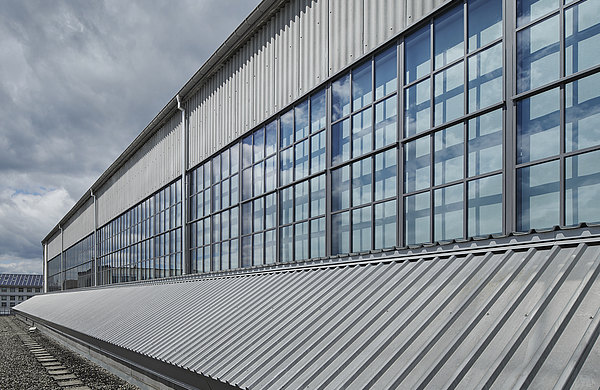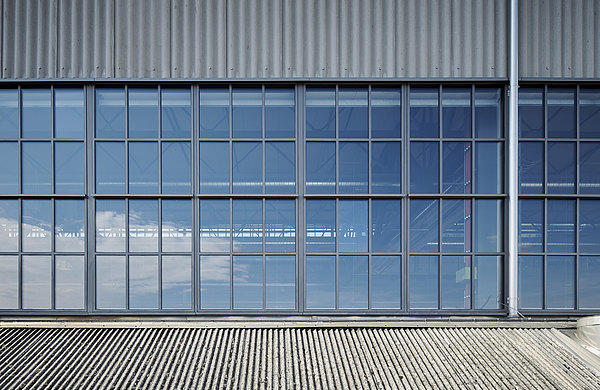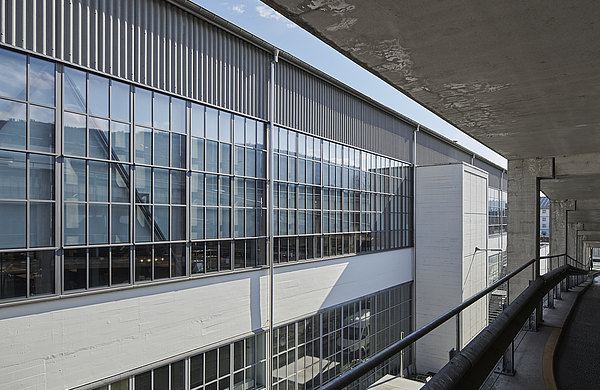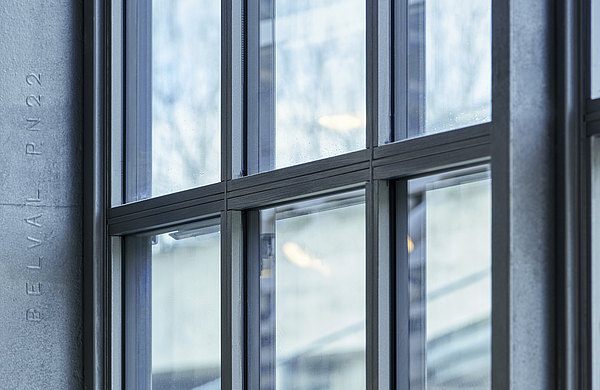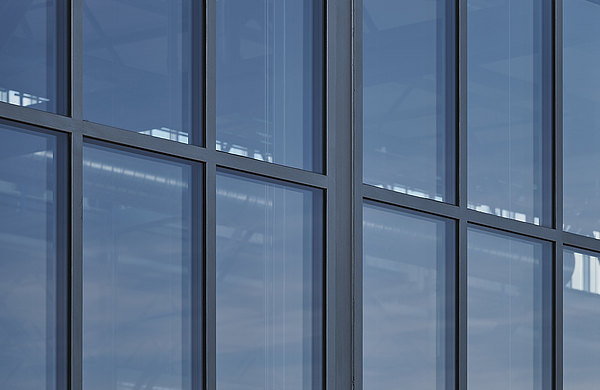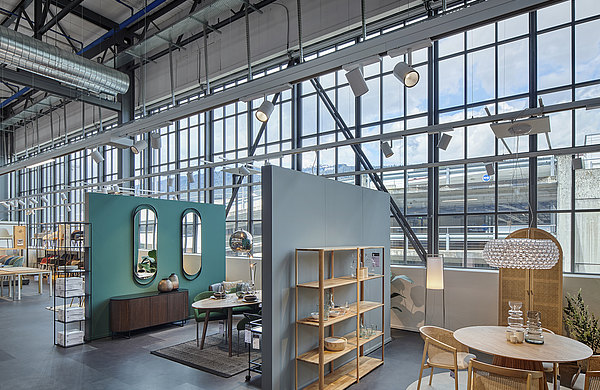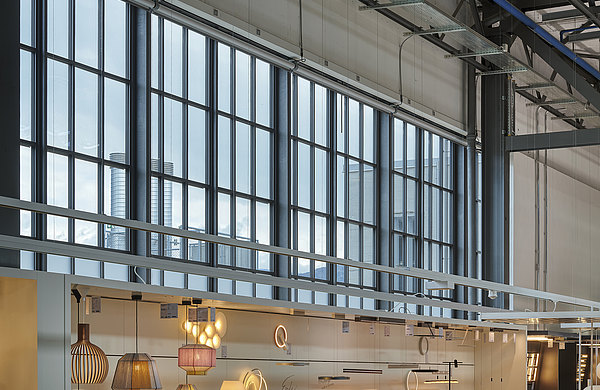Factory floors in the Biel Salzhaus
Energy-based restoration of the listed façades
The former administration buildings and assembly halls of General Motors Suisse are located in the Neustadt Süd district at 31, Salzhausstrasse near Biel train station in the Canton of Bern. The buildings, which were constructed in 1935 and later expanded, are sophisticated in design and are considered a pioneering achievement of modern factory construction in Switzerland. They are listed as important witnesses to Biel’s industrial history. The architect of these avant-garde structures was Rudolf Steiger from Zurich, who paved the way for the New Architecture movement. In the course of the energy-based restoration from January to June 2022, the historic glazing on the north and south façades on the first floor was exchanged and replaced by a thermally insulated solution with the filigree profile system forster unico xs.
The two unsupported assembly halls are designed as steel constructions under saw-tooth roofs, a roof shape that is used particularly for constructions with a large floor area. Here, several self-supporting gable roofs are placed next to each other. A particular highlight of the halls are the generous glass fronts with fine transoms, which allow a glimpse into the assembly process from Salzhausstrasse in Biel. Between 1955 and 1957, a further assembly hall and a spare parts store were built and in 1976 the building was converted into a multi-storey car park, a shopping centre and an office building.
Today, the top floor of the factory building houses a sales area of the furniture store chain Livique. In the first stage of the energy-based restoration of the historical building complex, the fixed glazing of the listed south and north façades of the ensemble on the top floor were replaced by thermally insulated glazing. Over the next few years, further stages of renovation are to be carried out in the same style.
Energy-based restoration in line with requirements for listed buildings with forster unico xs
The outer glass front of the former factory halls consisted of uninsulated single glazing with very narrow profiles. On both the north and south façades, a five metre-high and 120 metre-wide front had to be extended, the glass elements of which were held in place by steel girders. Altogether, almost 100 square metres of glazed area was renewed with 1,900 fixed glazings on the top floor of the Salzhaus. As the façades are listed, the new fixed glazing must have the same profile facing widths as the original elements, made of angle and T-steel profiles with single glazing.
The biggest challenge was the triple-insulating glazing planned during the restoration – because compared with single glazing, restrictions exist in the maximum deflection of façade elements under wind loads when using modern insulating glazing. In order to meet the static requirements even with the stipulated narrow face widths of the profiles, the architects opted for the filigree and robust profile system forster unico xs made of steel.
The unico xs system consists completely of recyclable steel and thanks to its special connection technology enables very narrow profiles with a face width of only 23 millimetres – which has not been possible with thermally insulated series so far. The forster unico xs system is thus ideally suited for restoring listed industry halls such as the Salzhaus in Biel. According to the metal constructor, both the fabrication as well as the assembly of the new glazing was gratifyingly quick, so that the tight time frame of only three months could be met.
Biel, Switzerland
Products: Thermally insulated fixed glazing with forster unico xs
Architecture: Gebert Architekten GmbH, Biel (CH)
Metal fabrication: Charles Sauter AG, Lyss (CH)
Client: LIVIQUE Biel (CH)
Photography: Damian Poffet

